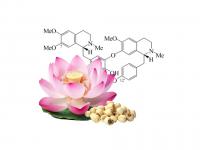March 27, 2024
Lotus ((Nelumbo nucifera G.) is also known as water lily, sacred lotus, and Kamala. It is an aquatic perennial flower with one aquatic genus Nelumbo which accommodates Nelumbo nucifera (cultivated) and Nelumbo lutea (Wild) species. The genus is found throughout the Asian continent (China, India, and Russia) and in Northern parts of Australia and North America. In Asia, lotus is cultivated for nutritious rhizomes, leaves, and seeds and is being used as a food for 7000 years. Due to its important nutritional properties, it is one of the important economic crops of China, producing 45,000 tons of lotus seed and 9 million tons of fresh rhizomes. Traditionally the extracts of the leaves, rhizomes, seeds, flowers, roots, and buds were used to treat diarrhea, cardiac ailments, depression, insomnia, cancer, and hypertension.
Among all plant parts, lotus seed has attracted special attention from researchers due to its richness in major food components (lipid, protein, starch, vitamins, and minerals) and bioactive compounds. The seed contains 61%–62% of carbohydrates, 16%–21% of total protein, 2.40%–3% of crude fat with 5%–9% of. One of the dominant components of carbohydrates present in lotus seed is starch that demonstrated strong prebiotic effects with stimulating the growth of beneficial microbes in the gut. Among vitamins, vitamin C is found in maximum concentration (20–24 mg/100 g). Lotus seed is also considered a rich source of vitamins, including B1, B2, B6, and E. All these vitamins possess good physiological functions, antioxidant activity, and immune-boosting properties Lotus seed also showed a good presence of minerals, namely iron (13–18 mg/100 g), calcium (30–31 mg/100 g), sodium (30–35 mg/100 g), and potassium (16–20 mg/100 g). Due to the presence of the above-listed micronutrients, lotus seeds, can improve body functions and human health.

